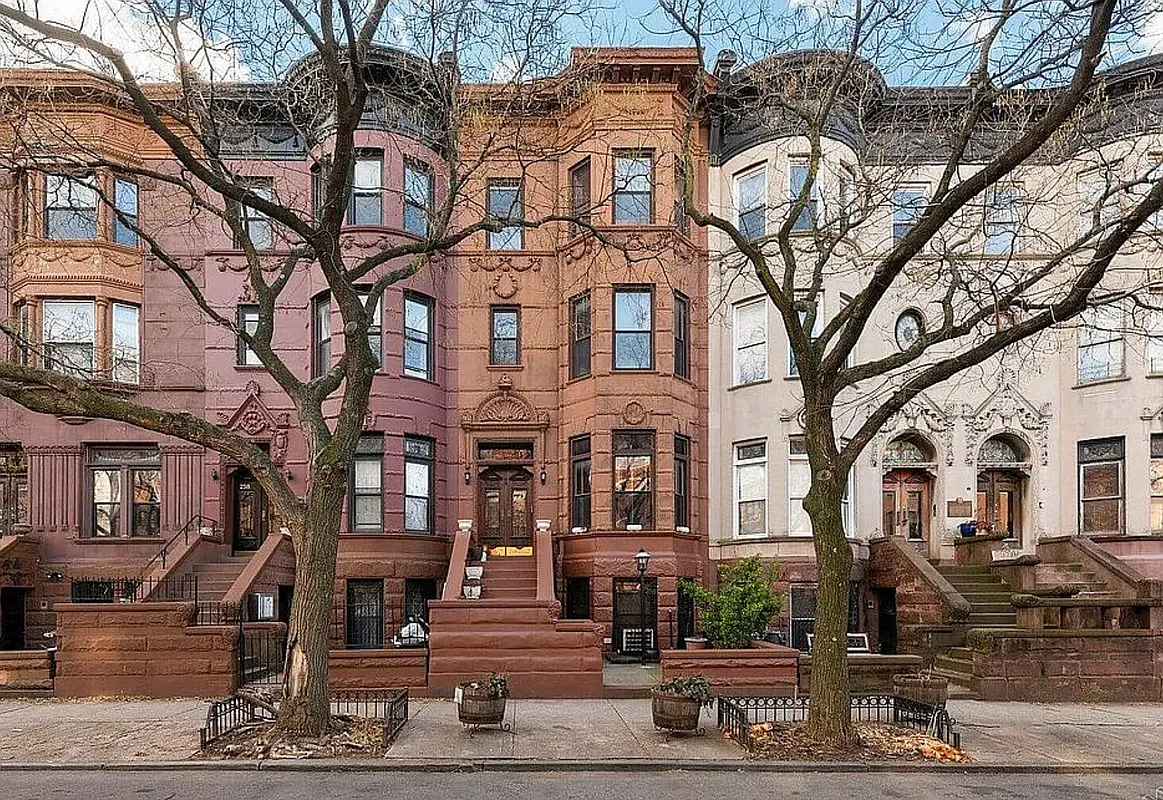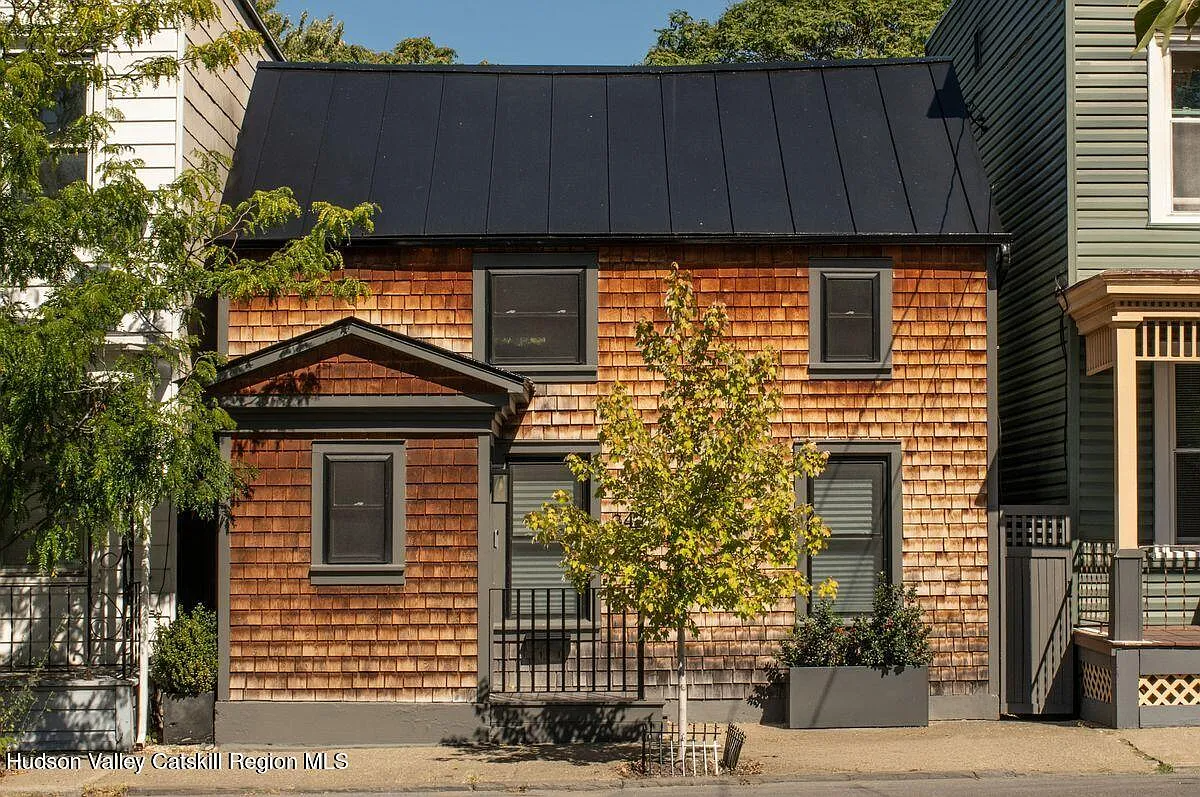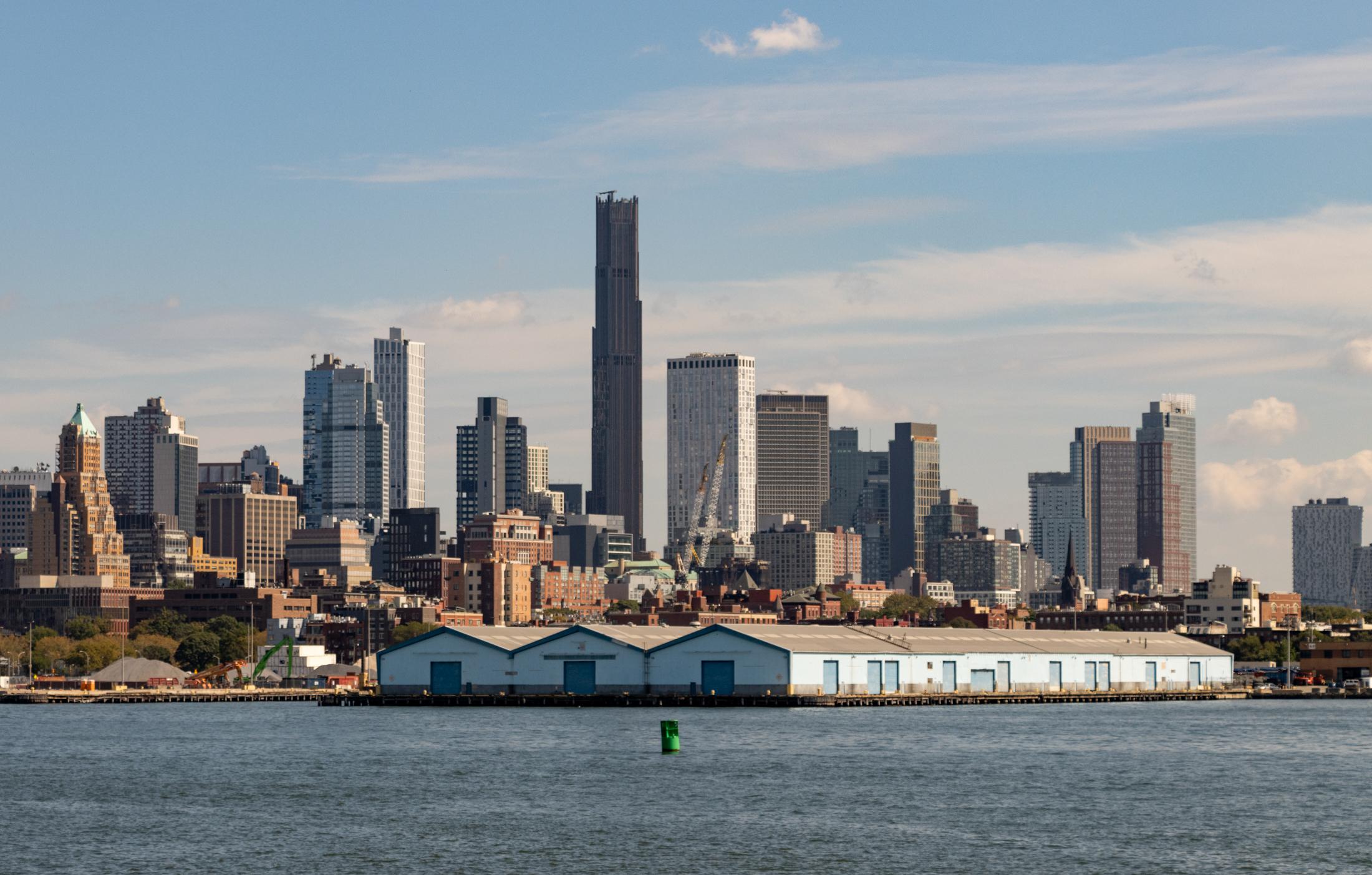Learning to Oppose the Atlantic Yards Project
Even though he lives within a few blocks of where the Nets arena would be built if Bruce Ratner’s Atlantic Yards project gets the go-ahead, writer Chris Smith had been long in forming an opinion on the subject. Partly in denial and partly in the interest of maintaining some kind of journalistic neutrality, it was…


Even though he lives within a few blocks of where the Nets arena would be built if Bruce Ratner’s Atlantic Yards project gets the go-ahead, writer Chris Smith had been long in forming an opinion on the subject. Partly in denial and partly in the interest of maintaining some kind of journalistic neutrality, it was not until he jumped head-first into researching this article–and witnessing first hand Ratner’s “truly chilling” manipulation of the political process–that he found himself standing firmly in the opposition camp. It’s a long, personalized article with lots of color, but his Bertha Lewis encounter was arguably the most histrionic, providing the article’s money-shot of a race-baiting quote (equalled only by the class-baiting of Assemblyman Roger Green):
“You want to talk to me about traffic, you want to talk to me about density, you go right ahead,” she says, implying she considers it all a pretext. “Talk to me about what your resolution is to the resegregation of Brooklyn. Black and brown folks have been driven out of central Brooklyn!” Lewis ladles on the “street” theatrics as she warms up, shimmying in her chair and dropping her g’s. “We’re looking at the gentrification—I don’t see a lot of black and brown folks in the wave runnin’ up in here! The overwhelming folks who are opposed are white people and wealthier people and more secure people and people who just arrived. Come on! This is about the power dynamic of who in fact is going to be living in Downtown and central Brooklyn and where the power Âreally is going to be. And we’re down to get it on! We’re tired of being pushed out. If we can stop one iota of gentrification, we’re gonna do it!“
For what, 900 apartments for the $35K-and-under set? What about all the people who will be waiting longer on crowded subway platforms and whose children will see their public school class sizes balloon? Certainly many of them will be “black and brown,” no?
Battle for the Soul of Brooklyn [New York Magazine]
NY Mag Weighs in on Atlantic Yards Saga [Brooklyn Record]






“The more high income housing you build, the less strain on public schools. So complaints about a lack of affordable housing in the plan and a shortage of classrooms rings false to me.”
So you are actually saying that by building more luxury housing,(with the assumption that the children therein will not attend local public schools)the problems of overcrowding of said public schools is thereby solved.
Wham, bam, boom.
Way to go! One pesky social problem solved!
I’m comfortable with my numbers. The whole debate is inherently speculative and requires estimation. I don’t have an econometric model up (yet), but I’ve tried to be conservative in my assumptions.
Much of the debate looks at infrastructure as static and fixed, which it is neither. That’s addition.
Calculus acknowledges that there is adjustment. For example, the more parking you build the more traffic you will generate. I’ve heard plenty of hand wringing about parking shortages at AY followed by moans about traffic.
The more high income housing you build, the less strain on public schools. So complaints about a lack of affordable housing in the plan and a shortage of classrooms rings false to me.
I am trying to raise this debate to a level that acknowledges the complexity and the plannning challenges. I’m sick of the shreiks about “scale” and “context” and “Brooklyn’s character” as if we could ever agree about any of that stuff.
Oops- that is, you can’t use addition when you need calculus.
“Wikipedia is an online free-content encyclopedia that anyone can edit” and yes, as wonderful as it is, where did they get their stats? And you’ve used stats that you yourself guesstimated. So what you’re saying is that these statistics are not from an official City source, and the numbers you’ve arrived at are based on your own interpretation? What qualifies you? Not to be disrespectful, MrLomez- but why are your statistics any better than the numbers quoted by DDDB?
As far as schools and supermarkets- yes- it’s a dynamic resource. So what? That’s possibility, not actuality. Saying there is no structural limit to school capacity is meaningless if there is no structure in the first place.So basically you haven’t addressed the issue at all.
Whether or not mass transportation has reached historical highs system-wide is not the issue. The issue is how functional is it system-wide and you will find that in the outer boroughs the subway system and the bus system are far from satisfactory. The Bronx, Queens and Brooklyn are enormous in size compared to Manhattan, yet the subway system is centralized around Manhattan. In the outer boroughs, as you get further out,stations are spread further out.This leaves thousands of workers, families, students, even potential Nets fans in the position of trying to get to a station however they can and that could mean as much as 2 buses and then subway. And in general, those are usually working class and poor neighborhoods who have the stress of a daily commute that is long and difficult. Your numbers are useless because by factoring in Manhattan as if all parts of the system are equal to Manhattan, you come up with an average that looks fine on paper, and like hell in subway car. YOu can use addition when you need calculus.
Cities do grow (well… not all.)but not at an even or evenly distributed rate. Touting the Atlantic Ave. hub as the answer is simply ignoring the reality of thousands of New Yorkers who have to use a car to get food, go to work or to a Nets game because mass transit is few and far between. And depending on slick media spin (especially when its empty) still doesn’t make it better.
The stats for 70k east river crossings come from wikipeda daily crossings into manahattan between 5am and 11am.
1. Queensboro Bridge: 31,000
2. Lincoln Tunnel: 25,944
3. Brooklyn Bridge: 22,241
4. Williamsburg Bridge: 18,339
5. Queens-Midtown Tunnel: 17,968
6. Holland Tunnel: 16,257
7. Brooklyn Battery Tunnel: 14,496
8. Manhattan Bridge: 13,818
I simply add the Brooklyn Bridge, Manhattan Bridge, Battery Tunnel and Willamsburg Bridge numbers. Arguably you could include the Queensboro and the Midtown Tunnel which I have not.
5000 is my estimate of incremental vehicle traffic based on 20,000 attendees and workers per event, 65% of whom take personal vehicles to the event and 2.5 people per car (these data are conservatively rounded figure from the FEIS report on the Yankee stadium project).
So 0.65*20,000/2.5=5,200. Some of these will be people who already drive home from manhattan through this area, so they are not incremental.
With respect to schools and mass transit, it should be acknowledged that supply of these resources is dynamic. Arguing that there aren’t enough schools is like arguing there aren’t enough supermarkets. There is no structural limit to supermarket capacity or school capacity. Some mass transit resources are limited, but the utilization system-wide hasn’t reached historical highs. Ridership has nearly doubled in the last 10-years. Cities grow.
MrLomez- you have said your piece on impact but I have asked you more than once for the source of your traffic stats and you refuse to reply. And yes I have noticed we very unfortunately have a Republican mayor and governor. The mayor however became a Republican in order to run for office. Up to then he was a lifelong Democrat. Nothing like a man who sells out, right? There wasn’t much focus at all on the AY project at that time. People had much more important worries, like Iraq, terrorism, the whittling away of women’s rights and the increasingly disgusting attack on homosexuals and their rights. Bloomberg made sure to avoid mention of AY, especially since he got burned on the Westside Stadium (yay!!). But Bloomberg is also elitist, and arrogant, stating that he was elected to do what he thought best. And that is erroneous. We vote because we want someone in office who will act on our best interests.
I don’t get your argument about elected officials supporting the project as if we are to accept their “wisdom” and their “honesty” as a given. It’s paternalistic and foolish to expect that once a pol is elected he is free to do as he pleases. If that were the case we wouldn’t need the Constitution or the Bill of Rights.
As far as the failure of democracy, because the entire process was flawed and decided by persons in powerful positions with prior ties to Ratner, and the circumvention of the public review process, I think we can safely say democracy and law had nothing to do with their decisions and cronyism everything. Whether or not state land usage is subject to referendum, the point is the people are the state and it is the state which is supposed to act FOR the people, all of the people, not a select group. So when the MTA sells the air rights for a paltry 100 million or so, and the state gives Ratner huge tax abatements and money, I question who is really benefiting. So far Ratner is making out like a bandit. Please don’t tell me about all the jobs and new housing.
1. Construction workers are not the only people who need jobs. When the job is over, they’re gone. THe job creation for the long haul is hardly rosy for the AY- low wage scale for the most part.
2. An in-depth analysis of the subsidized housing shows maybe 900 apartments set aside for truly low income people, and the balance of the over 2000 others are subsidized for families with incomes the range from about 75,000 up to 119,000 (if I remember correctly). I know plenty of people who have raised families on that and without subsidies. If you can make that kind of money, and I make far far less, why the hell should I subsidize you? If you can’t live within your means at that income level, there is something wrong with you. Life is very different at 35,000 than 100,000.
3. The amount of money Ratner paid to the MTA is more than made up for by the abatements and grants.
4. As the project strains services and roads in the area, the fixes will once again come out of the public’s pocket.(Got the source of those stats for me yet?)
5. The size and scale of the project will put the AY area very close if not over the tipping point where density helps the environment and starts to impact negatively. And the impact on surrounding neighborhoods will be enormous and not for the better.
MrLomez, by no means did I make this personal. I rather took exception to your rather dismissive attitude to things you seem to find unimportant, as evidenced by the following: “I have stated that I am not particularly troubled by traffic arguments anyway, since I do not consider private automobiles to be a reliable form of transportation for residents anyway.” Just ‘cuz you say it, don’t make it so. Are you an expert on traffic and transportation issues? Where do you get your facts and figures? Bx2Bklyn is correct, this is much more than simply an intellectual exercise on cars per square mile, or somesuch. I base my opinions on living in Bklyn for 25 years and seeing the traffic in the AY area as both a pedestrian and as a driver or passenger. Does anyone remember that it took the city over 10 years to finish the streets at the intersection of Atlantic and Flatbush Aves? That will be nothing compared to what the traffic will look like between the construction and the congestion at game time, with not only a gazillion more cars, but with also thousands more residents and sports fans in the streets and byways.
As for education, I am from a family of educators, and have heard both the horror stories as well as the stories of hope and success. In one of my mother’s schools, they turned a teacher’s lounge (which was itself originally a utility closet) into a classroom, because they needed the room. The closet was a wall away from a girl’s bathroom, and the sound of toilets flushing, as well as the smell of strong disinfectant was present all day. That is what an overcrowded system produces, and trust me, it would not be long before stories like that start coming from local schools. Even 3 or 4 new kids IN EACH ROOM means a couple hundred new kids, all putting more wear and tear on aging buildings and systems. Maybe many of the new people in AY won’t send their kids to local schools, does that mean that those who do, added to those who always have, deserve even less than what they already have? No. No. No.
Just as our esteemed gov’t has no exit strategy or plan for Iraq and Afganistan, FCR’s plans are sketchy at best and dismissive and condescending at worst. They and you, apparently, dismiss the opponents of the project as lefty, white ex-suburbanite NIMBY’s, and of course, like anything, there is a bit of truth in that. However, the opposition to the project is made up of people from all over the spectrum, and includes elected officials. To say that Bloomberg and crew were elected by people who either want AY, or don’t care, is like like judging the opposition to the US policies by the re-election of the Shrub. There is still major opposition, and more people are joining every day.
I believe that development on the AY site is both necessary and inevitable. I do not live in the shadow of the project, but I believe I will be affected by it, and I believe that the quality of life of my fellow Brooklynites is worthy of my attention and action. Community involvement in planning issues, infrastructure, affordable housing, and all of the rest should be done with the cooperation and participation of representatives of all concerned, not forced down our throats by a paternalistic, profit driven monster entity.
Please try to attend:
RATner Meeting
Bruce Ratner’s Brooklyn Atlantic Yards Project
The Fort Greene Association & The Society for Clinton Hill
WEDNESDAY, AUGUST 16, 2006, 7:00-9:00 pm
Queen of All Saints Church
Lafayette Avenue between Clermont and Vanderbilt,
enter on Vanderbilt
http://clintonhillblog.blogspot.com/2006/08/ratner-meeting.html
I’ve said my piece on impact, but the anti-AYers seem to want to wrap this project in scandal. Ultimately this is a decision that was made by state and city government. If you haven’t noticed, we have duly elected republican governor and mayor. That these elected officials would have a pro-development view should come as no surprise. If Freddy Ferrar had one last year, this might be a very different project, but he didn’t win. The city voted overwhelmingly to reelect Bloomberg in spite of his pro-AY view. Was Bloomberg, who can buy and sell Ratner ten-times over, “bullied” into this view? Where is the failure of democracy here? There seems to be a lot of focus on the arm-twisting (which has been happening on both sides, I note), but no acknowledgement that our most powerful elected officials support the project.
I will state again, that state land use is not subject to referendum. It is subject to the executive and legislative process. You can very visibly and unambiguously block this project by passing legislation.